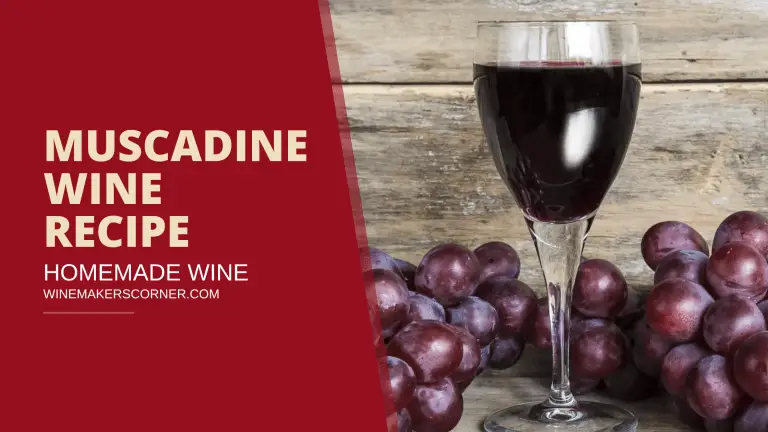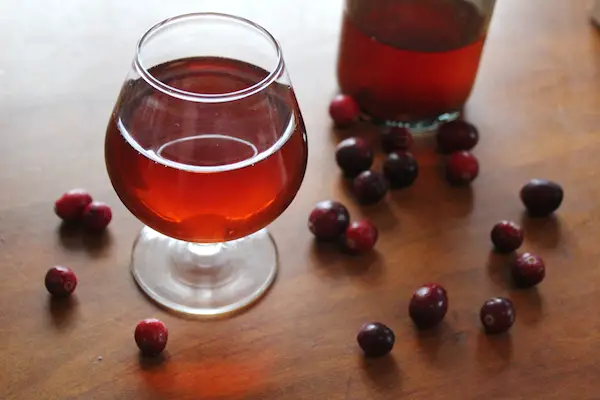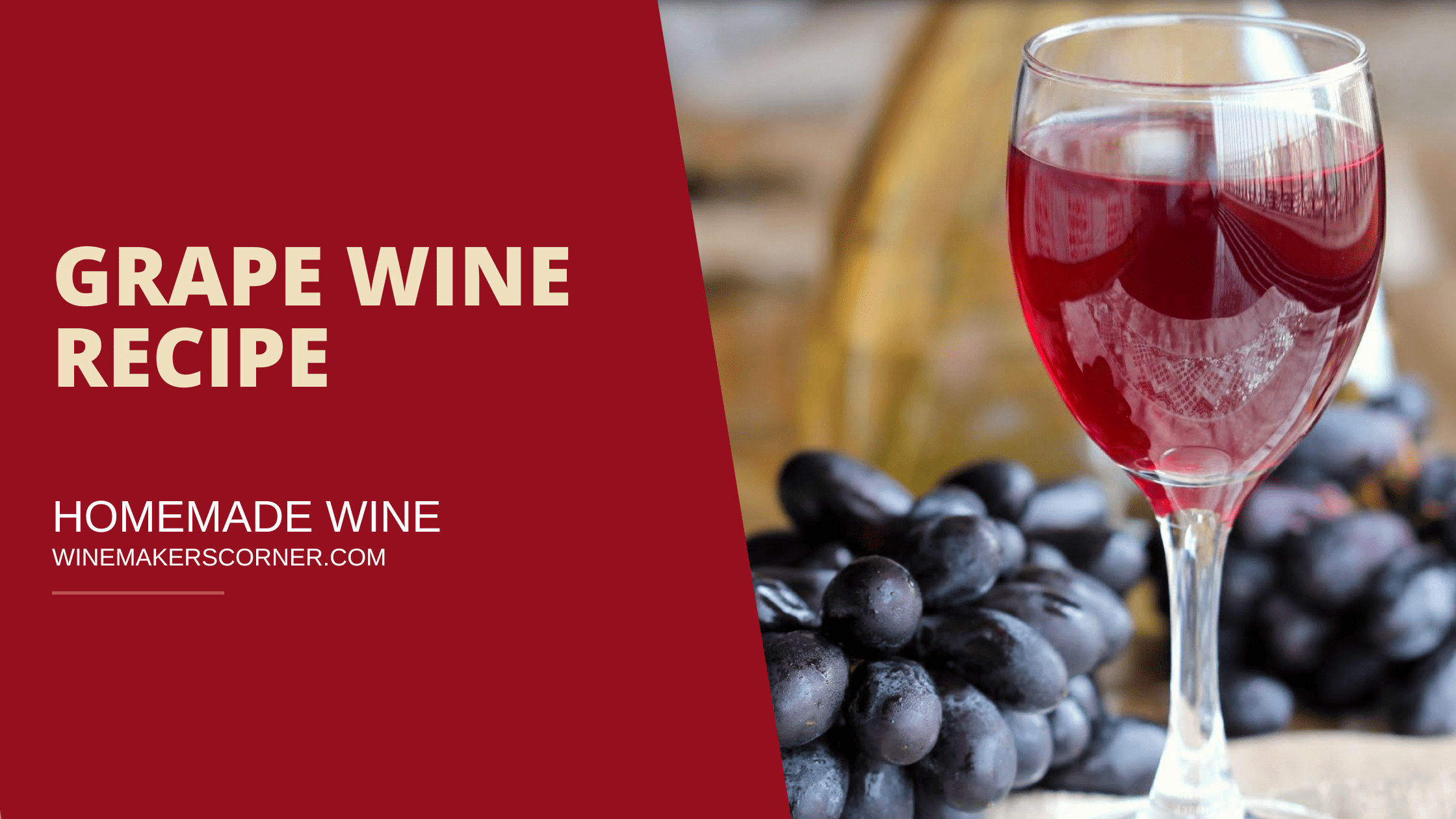Muscadine wine, a delightful beverage with a rich heritage in the American South, is made from the native muscadine grape. This grape variety, known for its thick skin and musky aroma, lends itself to a wine that is both robust in flavor and unique in character.
The process of making muscadine wine at home can be a gratifying endeavor for novices and experienced winemakers alike. With a few simple ingredients and patience, one can produce a wine that encapsulates the essence of the region it comes from.

The winemaking process starts with preparing the muscadine grapes and ensuring all equipment is properly sanitized to prevent contamination. Throughout fermentation, clarity, and aging, attention to detail can make the difference between an average wine and an exceptional one. The beauty of homemade muscadine wine lies in the ability to tailor the recipe to personal taste—whether that involves adjusting the sweetness, experimenting with fermentation times, or blending different grape varieties.
Key Takeaways
- Muscadine wine offers a distinctive flavor profile originating from a grape native to the southeastern United States.
- Proper sanitation and careful attention during the winemaking process are pivotal for producing high-quality muscadine wine.
- Customization in the winemaking process allows individuals to create a wine that caters to their personal preferences in taste and complexity.
Table of Contents
History and Background

Muscadine wine boasts a deep-rooted heritage in the southern United States, predominantly in North Carolina. Known for its robust flavor and sweet profile, muscadine wine has evolved from the oldest cultivated grapevine in America, the “Mother Vine,” which stretches back to over 400 years on Roanoke Island.
This type of grape, Vitis rotundifolia, thrives in the humid, southern climate, resulting in a distinct wine that diverges from traditional European varieties. Muscadine grapes, which include the well-known Scuppernong, North Carolina’s state fruit, are often highlighted in both classic and old-fashioned wine recipes.
Early records suggest these grapes were utilized by native peoples before European settlers arrived in 1587. They soon became a source of both pleasure and commerce, with their unique characteristics lending themselves to a time-honored winemaking process.
Homegrown Recipes:
- Classic Muscadine Wine Recipe: Predominantly uses just the grapes, sugar, water, and yeast, fermenting over several weeks to showcase the natural flavors.
- Old-fashioned Muscadine Wine Recipe: Often involves traditional practices like foot-pressing the grapes and aging the wine without the addition of modern preservatives.
Muscadine wine recipes, whether classic or old-fashioned, aim to celebrate the grape’s individuality. These recipes are steeped in history, embodying a taste that is a testament to the cultural legacy of winemaking in the American Southeast.
Preparing the Ingredients

The preparation of ingredients is a critical step in crafting a successful batch of Muscadine wine. One must select high-quality grapes and measure the correct balance of sweetness and acidity for optimal fermentation.
Selecting Quality Muscadine Grapes
The foundation of a great Muscadine wine is the quality of the grapes used. For the best results, one should opt for fresh, ripe Muscadine grapes. They should be plump, free of blemishes or rot, and have a uniform color. The grapes’ freshness directly correlates with the robustness of the wine’s flavor, so it’s crucial to choose the best possible specimens.
Measuring Sweetness and Acid Levels
Measuring and adjusting the sweetness and acid levels is essential for fermentation and the wine’s final taste. One should use an acid testing kit to ensure the grape juice, or must, has the proper pH level for winemaking. The ideal balance will support yeast health and affect the wine’s preservation and taste.
- Acid Testing Kit: Utilize this tool to test the acidity of the must, aiming for a pH between 3.1 and 3.7 for optimal fermentation conditions.
To adjust sweetness, typically one would dissolve granulated sugar in water to create a syrup before adding it to the must. The amount of sugar added impacts the wine’s alcohol content and sweetness, and it must be measured precisely.
- Sugar: Carefully measure the sugar, adhering to proportions suitable for the amount of must.
- Water: Use filtered water for dilution, ensuring no impurities affect the wine.
By meticulously preparing the grapes and must, the winemaker sets the stage for a well-balanced and delightful Muscadine wine.
Sanitizing Equipment

Ensuring your equipment is sanitized is critical in winemaking to prevent contamination and spoilage of the wine.
Cleaning Vessels and Utensils
Prior to sanitation, all vessels and utensils involved in the winemaking process should be thoroughly cleaned. They must be free from residues, dirt, and organic materials, which could harbor bacteria and other microbes detrimental to the wine quality.
- Cleaning Steps:
- Rinse equipment with hot water to remove any visible debris.
- Use a specialized winemaking cleanser or a mild detergent for scrubbing.
- After scrubbing, rinse all items with hot water until no soap remains.
Sterilizing with Campden Tablets
Once cleaned, equipment needs to be sterilized. This is where Campden tablets (potassium or sodium metabisulfite) come into play. They release sulfur dioxide, which is effective in killing bacteria, wild yeast, and fungi.
- Sterilization Steps:
- Crush the recommended number of Campden tablets—typically one tablet per gallon of water.
- Dissolve the crushed tablets in a small amount of water to create a sanitizing solution.
- Apply this solution to all surfaces of the winemaking equipment, ensuring full coverage.
- Allow the equipment to stand with the solution for the recommended period, usually around 10 minutes, before rinsing or using as per specific instructions.
It is important to follow the correct concentrations and contact times when using Campden tablets to ensure effective sterilization without leaving residual flavors in the wine.
The Winemaking Process

The winemaking process is a precise craft that transforms the humble muscadine grape into a rich, flavorful wine. It relies on careful preparation and monitoring of each stage, from crushing the grapes to the careful oversight of fermentation.
Crushing and Destemming
Grapes must first be separated from the stems and gently crushed to release their juices. This initial stage is crucial, as rough handling can lead to bitter tannins from the skins and seeds affecting the wine’s flavor profile.
Must Preparation
The must, or crushed grape mixture, is prepared with the addition of specific quantities of pectic enzyme, which helps break down the pectin in the grape skins and enhances the clarity of the final wine. At this stage, a yeast nutrient may also be added to provide the yeast with necessary compounds for a healthy fermentation process.
Fermentation Essentials
A suitable strain of wine yeast is introduced to the must to commence the fermentation. This is a critical phase where sugars are converted into alcohol and carbon dioxide. Proper sanitary conditions must be maintained to ensure a pure fermentation.
Ideal Fermentation Conditions:
- Temperature: Varies by yeast strain, often between 60-75°F (15-24°C)
- pH Levels: Generally around 3.0 to 3.8 for muscadine wines
Monitoring the Fermentation
Regular checks on the progress of fermentation are imperative. The winemaker measures specific gravity and temperature to track fermentation and determines when to transition from primary to secondary stages. The use of a wine stabilizer, such as Potassium Sorbate, ensures that the wine ceases fermenting once the desired sweetness and alcohol levels are reached.
Secondary Fermentation and Clarification

After the initial vigorous fermentation subsides, Muscadine wine enters a pivotal stage involving secondary fermentation and clarification, essential for developing flavor and clarity.
Racking to Secondary Vessel
For secondary fermentation, the wine must be transferred, or “racked,” from the primary fermenter to a secondary vessel. This step typically involves the use of a siphon to carefully leave behind the sediment composed of dead yeast and other particulate matter. An airlock is then fitted onto the secondary vessel, which allows carbon dioxide produced by the fermentation process to escape while preventing any oxygen from entering. The cheesecloth is sometimes used when transferring to catch any remaining solids. These measures help protect the delicate wine from oxidation and spoilage.
Clearing the Wine
The clarification stage allows the wine to clear naturally over time. During this period, any remaining sediment gradually settles at the bottom of the vessel. Patience is key as the wine undergoes a gradual clearing process, which can take several weeks to months. The length of this phase depends on various factors specific to the batch, like the wine’s sugar content and the ambient temperature. The secondary fermentation and clarification are critical for achieving a smooth, mature Muscadine wine with a clear appearance.
Aging and Bottling

The process of aging and bottling is a critical phase in winemaking that stabilizes the wine and develops its flavor profile. Proper techniques ensure that Muscadine wine reaches its full potential in taste and quality over time.
Determining Aging Period
Aging Muscadine wine typically spans from a few months to several years, which concentrates the flavors and improves the nuanced characteristics of the wine. Factors influencing the aging period include the wine’s tannin levels, acidity, and desired taste complexity.
- Sweet Muscadine Wine: Often aged for a shorter period, sweet wines such as Muscadines may be ready within a few months, since prolonged aging can sometimes lead to the loss of the fruit’s natural sweetness.
- Dry Muscadine Wine: For wines with higher alcohol content and a robust structure, aging might extend for a couple of years to mellow the tannins and deepen the overall palette.
Bottle Filling and Storage
Proper bottling and storage are essential for preserving Muscadine wine’s integrity and ensuring its quality during aging.
- Bottling:
- Potassium Sorbate: To ensure stability, particularly in sweet wines, winemakers may add potassium sorbate before bottling to inhibit yeast reproduction and prevent further fermentation.
- Bottles should be thoroughly cleaned and sterilized before use to prevent contamination.
- Glass Bottles: Commonly used because they do not impart any flavors to the wine and can protect it from light and air infiltration.
- Storage:
- Store bottles in a consistent, cool, and dark environment to maintain the wine’s complex profile.
- Bottles should typically be placed on their sides to keep the corks moist, which prevents shrinkage and oxidation.
- The storage area should be free from strong odors or vibrations, both of which can degrade the quality of the wine over time.
Serving and Enjoyment
Muscadine wine offers a distinct flavor profile best appreciated when served at the optimal temperature and paired with complementary foods.

Decanting and Serving Suggestions
When serving muscadine wine, one should decant it gently to separate it from any possible sediment. It enhances the wine’s flavors and aromas. The ideal serving temperature for muscadine wine is slightly chilled, typically around 55-65°F (13-18°C). Serve it in a wide-brimmed wine glass to allow its sweet, fruity bouquet to develop fully.
Tasting Notes
Muscadine wines typically exhibit a bold, fruity taste with notes of ripe berries and a musky finish. They tend to be sweet with a robust character, making them quite distinct from European-style wines. When it comes to food pairing, their sweetness and pronounced flavors pair well with:
- Cheeses: Soft, creamy cheeses such as brie or goat cheese.
- Desserts: Fruit-based desserts like peach cobbler or apple pie.
- Spicy cuisines: Complements the heat from dishes like spicy Asian or Cajun food.
Italicizing key flavors and taste descriptors can draw attention to the wine’s unique attributes. By understanding these characteristics, one can confidently serve muscadine wine in a manner that enhances enjoyment and appreciation of its distinctive qualities.
Nutritional Information and Health Benefits

Muscadine wine, derived from the native American muscadine grape, brings a distinctive nutritional profile distinct from common table wines. Each serving typically contains less than 1 gram of fat, around 4 grams of carbohydrates, marginal fiber, and approximately 1 gram of sugar. Muscadine wines stand out due to their impressive content of antioxidants, which are compounds known for combating oxidative stress and may support cardiovascular health.
Key Nutritional Components:
- Calories: Depends on the serving size, with an average of 120-130 calories per 5oz glass.
- Carbohydrates: About 4 grams, primarily from natural grape sugars.
- Fiber: Less than 1 gram, as most comes from the skin and pulp that are typically removed during wine production.
- Antioxidants: Muscadine grapes are rich in polyphenols which are known for their antioxidant properties.
In terms of minerals, while the wine doesn’t provide significant amounts of calcium or vitamin C since these are largely lost during the fermentation process, it does supply other minerals like potassium and magnesium, as well as a moderate amount of iron and phosphorus.
The high levels of antioxidants in muscadine wines suggest potential health benefits. Studies have pointed to antioxidants playing a role in reducing inflammation and lowering the risk of chronic diseases. Specifically, these antioxidants can help maintain the integrity of blood vessels, potentially contributing to better heart health.
While muscadine wine can contribute to a healthy diet, it should be enjoyed in moderation due to its alcohol content. Individuals should always adhere to dietary guidelines regarding alcohol consumption.
Customizing Your Recipe

Customizing a muscadine wine recipe gives the winemaker the freedom to create a beverage that suits their taste preferences. Proper adjustments to sugar levels and the introduction of unique flavors can significantly alter the character of the wine.
Experimenting with Sugar Levels
The sweetness of muscadine wine is primarily determined by the amount of sugar used during fermentation. Winemakers can adjust the sweetness by varying the quantity of granulated sugar added.
- Dry Wine: Typically requires less sugar, as most of it will be converted into alcohol.
- Sweet Wine: Additional sugar is necessary to create a sweet profile, as some will remain unfermented.
A standard approach is to begin with a baseline amount of sugar and adjust in subsequent batches according to taste.
Adding Unique Flavors
Incorporating distinctive flavors can transform a basic muscadine wine into a unique creation. For instance, adding fruit butter, such as apple or peach butter, can introduce a rich and nuanced flavor profile to the wine.
- Start Small: Add a small quantity of fruit butter to avoid overpowering the wine’s natural flavors.
- Test and Taste: Sample the wine after adding and before bottling to ensure the desired flavor characteristics are present.
Winemakers should document their modifications to consistently replicate successful recipes or further refine the flavors in future batches.
Troubleshooting Common Issues

When making Muscadine wine at home, the winemaker may encounter fermentation issues or contamination. This section provides solutions to address these challenges effectively.
Handling Unexpected Fermentation Problems
Stuck Fermentation: If fermentation stops prematurely, the winemaker should first check the temperature and sugar levels, as they are critical for yeast activity. Adjusting the temperature to fall within the optimal range for the yeast strain used (typically between 70-75°F for wine yeasts) can often resolve this issue. Additionally, ensuring sufficient nutrients are available for the yeast by adding a yeast nutrient can help restart fermentation.
Slow Fermentation: A lagging fermentation process could be due to low yeast count or a nutrient deficiency. The winemaker may remedy this by introducing more yeast or nutrients into the must. Another factor could be the pH level of the wine; adjusting the pH to fall within the ideal range (3.0-3.6) can enhance yeast activity.
Dealing with Contamination
Bacterial Infections: Contamination by bacteria can produce off-flavors and ruin wine. Adequate sanitation of all equipment before use is critical. If contamination is suspected, adding sulphites may help to stop the growth of unwanted bacteria without affecting the fermenting yeast.
Mold Growth: Mold can develop on the surface of the fermenting wine if exposed to air. To handle mold, the winemaker should remove any visible mold and rack the wine into a clean container, minimizing headspace to reduce further exposure to air. Sulfites may be added, as needed, to inhibit additional mold growth.
Ensuring proper sanitation and carefully following the steps of the homebrew process will greatly minimize the risks of fermentation issues and contamination.
Advanced Techniques

In striving to enrich the complexity and depth of Muscadine wine, experienced winemakers may consider blending different grape varieties and the use of oak aging. These advanced methods can significantly enhance the wine’s profile.
Blending Varieties
When blending varieties of Muscadine grapes, winemakers pay close attention to the characteristics each type brings to the table. For instance, red cultivars often contribute robust flavors and a deeper color, while green varieties can add a refreshing vibrancy. Winemakers typically experiment with different ratios to achieve a desired flavor profile. It’s imperative to meticulously remove all seeds and leaves before blending to ensure a smooth and pure wine.
- Example Blend:
- 60% Red Muscadine
- 40% Green Muscadine
This combination could yield a balanced wine, merging the boldness of reds with the crispness of greens.
Oak Aging
Oak aging introduces another layer of complexity, infusing Muscadine wine with subtle notes of vanilla, spice, or toast, depending on the type of oak used. The process involves the careful selection of oak barrels in which the wine will mature. Not all wines benefit from the same duration or type of oak, so winemakers must decide based on the initial characteristics of the wine.
- Oak Aging Parameters:
- Type of Oak: American, French, or Hungarian
- Duration: Typically ranges from 6 to 24 months
They monitor the wine continuously and taste periodically to determine the optimal aging time. This technique often softens tannins, which although less prevalent in Muscadine than other wines, can still impact the mouthfeel and taste balance.
Frequently Asked Questions

This section addresses common inquiries related to the process of making muscadine wine at home, offering clear and straightforward guidance for both beginners and experienced wine enthusiasts.
How can one make muscadine wine at home without using commercial wine-making equipment?
One can utilize everyday kitchen items such as a 5-gallon food-grade bucket, a large pot, a mesh bag for containing the fruit, airlocks, and bottles. Sanitation is crucial to prevent spoilage.
What is the simplest method to prepare muscadine wine for beginners?
The simplest method involves crushing muscadines, combining them with water and sugar, adding yeast for fermentation, and allowing the brew to ferment before bottling.
What is the required amount of muscadines to produce one gallon of homemade wine?
Typically, it takes about 6 to 8 pounds of muscadines to make one gallon of wine, ensuring a robust flavor profile.
Could you provide a step-by-step guide for making muscadine wine from scratch?
A basic guide includes: 1) Sanitizing equipment, 2) Crushing grapes, 3) Mixing grapes with sugar water, 4) Adding yeast, 5) Fermenting, 6) Straining and transferring, and 7) Aging and bottling the wine.
How long should I expect the primary fermentation of muscadine wine to last?
Primary fermentation of muscadine wine typically takes around 5 to 7 days, after which the must should be transferred to secondary fermentation to continue the process.
Which yeast strain is recommended for fermenting muscadine wine for optimal flavor?
For fermenting muscadine wine, wine-making yeast strains like Montrachet or EC-1118 are often recommended to highlight the grape’s natural flavors and ensure a steady fermentation.




